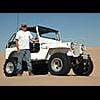Most of us went through this decision process when ordering a camper, it is fun but can also lead to analysis-paralysis. I ended up settling on anything that require cutting through walls of the camper I would have FWC install, and I would do the rest - it seems that finding the frame members and getting a clean seal after the fact is hard to achieve.
To answer your specific questions:
1. If you are electrically handy, get the minimum set of electronics from FWC or ATC. It is not a strong point for either company. Again, if you are electrically handy then the goalzero is not a great solution. You get a box full of mediocre parts and 10.8V battery that requires a lot of work arounds to work in a 12V system. 3000Wh (notice they don't use the standard industry Ah capacity) is a lot of power, do you need that much? Most are more than happy with 100 or 200 Ah (I have 150Ah) of lithium and quality components, an MPPT charge controller, a current shunt battery monitor and sinewave inverter if you need it.
2. Agreed on having FWC install the Yakima tracks only. That way they are responsible for the roof penetrations
and it is a super easy way to add solar panels or other accessories. There is no way you can walk on the roof of either FWC or ATC.
3. See point 1 - you can do better for less with solar. Depending on your usage somewhere between 150 - 300W of solar works for most folks. Flexible panels are lighter and thinner, but are prone to failure and are harder to mount. Rigid panels are cheap and easy to find in the right dimensions and mount to the tracks, but can add a fair bit of weight to the roof in larger sizes. For charge controllers the Victron MPPT units are really the only way to go - pick the one that is sized for your panel.
Hope this helps.
Edited by rando, 28 May 2020 - 02:37 PM.
















